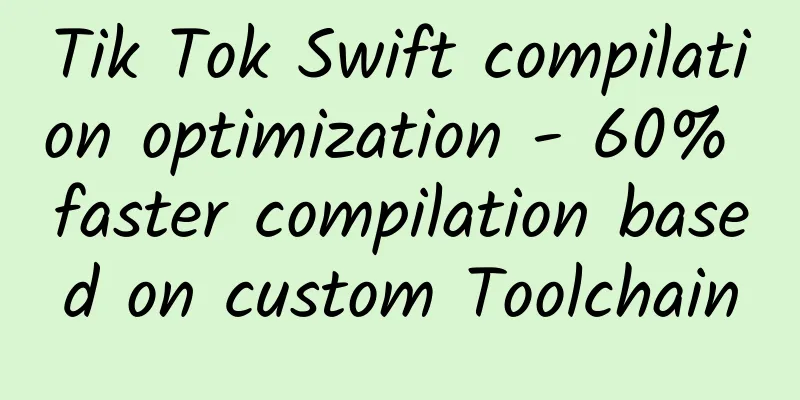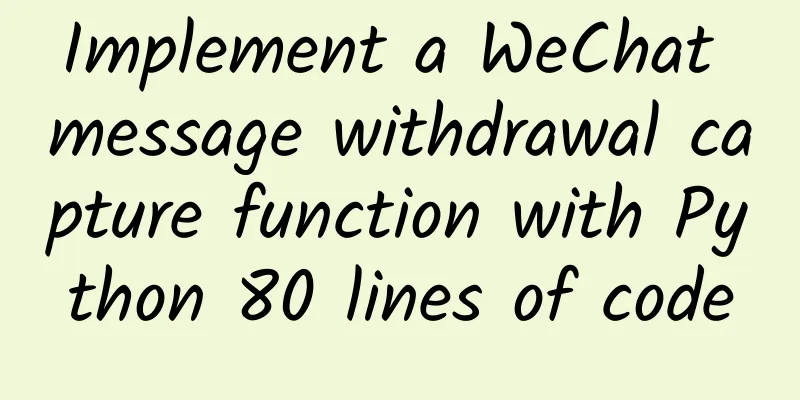Tik Tok Swift compilation optimization - 60% faster compilation based on custom Toolchain

|
The optimization solution is based on the Swift Toolchain source code. This article will no longer discuss the basic concepts and configuration processes related to Toolchain, but only focus on the solution itself . backgroundAs the number of mixed-compilation business scenarios increases, performance pain points in development begin to emerge. The problem is obviously concentrated on the modification of the header files of the OC warehouse that the Swift environment depends on. Therefore, the infrastructure architecture focuses on the performance analysis of the interface layer dependency, striving to solve the performance bottleneck. The Tik Tok basic technology team used the custom Toolchain capabilities to customize compilation parameters and trim the Clang Header specified content, ultimately increasing compilation speed by 60%. This plan was launched at the end of November 2022 and has been running stably on Douyin for nearly 5 months. Let us review the entire process from proposal to implementation. Preliminary analysis In a mixed compilation scenario, to ensure that OC and Swift interoperate as fully as possible, modularization cannot be enabled only in the Swift compilation context. The Clang Header exported by Swift compilation appears in the project as As shown in the figure, you can't have both. In order to parse the statement For TikTok, the historical burden of a large number of header files in the giant OC project made the introduction of modularization in OC compilation a disaster. In a modular environment, the time it takes for the cache system to decide whether to hit the .o cache is longer than the time it takes to recompile in a text environment; incremental compilation will also lead to extensive module recompilation, and changing a header file will require waiting for several minutes. Transitive dependency management is a long-term project, but compilation optimization cannot wait that long. We need a solution that can be solved quickly. Optimization effectBefore introducing the solution, let me first give the conclusion. In the Douyin project, select the OC&Swift mixed repository with the largest amount of code for testing:
It can be seen that this solution has greatly improved the compilation speed. Next, let's review the process of the entire solution from pre-research to launch. Solution PrincipleThe key to solving the problem is to reduce the time spent on precompiling OC header files. There are two ideas:
Swift will declare the C/OC modules used by its own interface layer (i.e. public/open) in the form of The effectiveness test of this optimization plan is aimed at short-term plans. By modifying the compiler, the Clang Header Interface generated by Swift compilation is trimmed, and @import outside the system library is deleted. The OC side manually completes the dependency where the header file is referenced. That is, at the expense of temporarily sacrificing the self-contained interface, the OC side no longer needs to care about module-related factors. To support finer-grained control, by injecting compilation parameters into the compiler, the activation of this function can be controlled for different components, and more specific trimming content can be achieved. It is relatively easy to remove Preliminary researchSolution DisassemblyLet's first break down the entire solution into tasks, so that we can analyze the dependencies between the various parts and save time in the preliminary research stage. A tool chain-related implementation solution must ensure its stability, so it must be able to be externally controlled and switched in a simple way. From the perspective of release, toolchain release is not like business code, which can be released flexibly like the configuration stored in the development warehouse. Therefore, the toolchain code should be kept as stable as possible and not modified unless necessary. Based on these two principles, we can break it down into: 1. Analyze the parameter parsing mechanism of 2. Based on the consideration of fine-grained control, the parameter selection passes in a configuration file, which contains a whitelist to determine which 3. Find the specific function that generates-Swift.h and the logic that writes 4. Load the whitelist file at the write logic and filter it. 5. Complete the verification of the Toolchain without perception through local verification, and launch the test Toolchain. 6. Grayscale verification. 7. The unified version is released online. Quick VerificationIn order to verify whether the direction is correct and give confidence to business colleagues who are troubled by time-consuming compilation, it is necessary to first find the most critical points for quick verification. Therefore, we decided to turn off all We quickly found this logic and commented Next, we can proceed to perform other tasks step by step in a steady and orderly manner. Development and debuggingSwift-frontend parameter parsing process So we turned our attention to other native parameters used at the front-end level and referred to their writing methods. Soon we locked our eyes on Based on the analysis of this parameter, we can get the parameter parsing process of the -frontend stage. The specific investigation process will not be expanded, and we will simply go through the process. The simple process is shown above. The following is a detailed code location for modifying the parameter parsing process. definitionHere we use a language very similar to Python, TableGen (https://llvm.org/docs/TableGen/) launched by LLVM. The following flags are what we need
Custom parameters that follow this form: The second EQ definition is actually an Alias, which defines that parameters can be passed in the form of "flag=arg", and has no other additional effects. Use the Combined with the OPTION definition in Options.h in the Swift source code, import and provide it to the cpp code for use AnalysisThe parsing process occurs in the parameter parsing process of CompilerInvOCation In the ArgsToFrontendOptionsConverter method, read the required information from the parameter list and assign it to Opts Opts is an instance of the FrontOptions type. We need to define a string here to store the parameters we need. Opts will circulate throughout the entire front-end process, providing necessary parameters for each link. Clang Header Generation ProcessThe flowchart of the calling process is as follows. PrintAsClang is a relatively independent module. We only need to focus on the two red links when making changes. Add input parameter definitionAdd two parameters to the original method definition, which are the whitelist file path we passed in and the diagnostic information. The diagnostic information will be mentioned later and is used to prompt some custom errors. It is the same here, adding two parameter definitions. Whitelist analysisprintAsClangHeader This is one of our main modifications. In this function_ref, we parse the content of the file pointed to by the allow list path, obtain the module name specified by the whitelist, and pass it to the next link as a parameter. The writeImports method adds a function_ref to the original method, which can be understood as a Perform whitelist screening at the specific writing of Customizing diagnostic informationAdd two custom entries to DiagnosticsClangImporter.def. Error is used to prompt parsing errors, and note only prompts that the whitelist is empty. Being empty is an allowed operation, and it degenerates to the default logic. Earlier, we passed in the Diags instance in the method definition. If we want to prompt information, we can simply call it. Note will only output to the log, and error will interrupt the compilation process. Verification and launchYou can use the cloud build machine to type out the test Toolchain, download it locally, integrate it into Xcode, and verify it on TikTok. Add custom parameters to the compilation parameters of the specified mixed component to successfully build it. postscriptSwift toolchain customization is a direction with infinite possibilities, including efficiency improvements such as compilation optimization, etc., which can perform deep optimizations at the bottom layer that are difficult to perform at the traditional architecture layer. There is still a lot to be done in this area in the future, and I believe there will be more experience to share with everyone. |
<<: Android finally supports this feature of iOS, but to be honest, it's a bit useless
>>: Introduction to Cloud Desktop Transmission Protocol
Recommend
How to plan a complete online event plan?
As a network operator, online activities are one ...
User operation: How to do user segmentation?
We have said that user stratification is a specia...
An inventory of 3 common ways to play in social networks!
There are many different ways to play in a commun...
Making software for Mac? What is Hammer trying to do?
It's Thursday. I haven't written an artic...
A universal formula for user growth, common across industries
Whether it's designing an event to attract 10...
Gaming on smartwatches: Break through or stop
Editor's note: I always think that making gam...
OCPC promotion effect is poor? You need to know 7 bidding methods of OCPC
Baidu search ocpc bidding is the current mainstre...
Finally decided, Apple completely gave up on under-screen fingerprint recognition, iOS15.4 made great contributions
Double unlock? Is Face ID the future, or is Touch...
Gamification Operation Plan for Knowledge APP
In the era of knowledge payment, acquiring knowle...
How can activities attract more users? I summarized these 4 key points
When running events or conducting marketing activ...
This is how products with over 100 million users retain users
The content of this article is a summary after ac...
The results of Maradona's autopsy were announced, and Argentina mourned for three days!
The results of Maradona's autopsy were announ...
A collection of Father’s Day poster copywriting, Durex is the best! !
For the upcoming Father's Day, many brands wi...
How to get the new version of AppStore traffic bonus before iOS11 is released
Introduction: For APP promotion and operation per...
The most complete salon event planning summary in history!
Introduction: For operations personnel, the work ...









